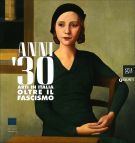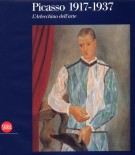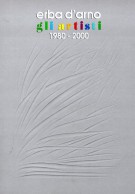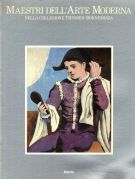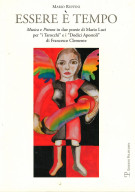The Thirties the arts in Italy beyond Fascism
| Autore/i | AA.VV. | ||
| Editore | Giunti Editore | Luogo | Firenze |
| Anno | 2012 | Pagine | 256 |
| Dimensioni | 25X26 (cm) | Illustrazioni | ill. a colori e b/n |
| Legatura | brossura | Conservazione | |
| Lingua | Peso | 1600 (gr) | |
| ISBN | 8809776321 | EAN-13 | 9788809776326 |
momentaneamente non disponibile
(Collana Cataloghi d'Arte).
Testo in inglese
Exhibition catalogue: Florence, Palazzo Strozzi, 22 September 2012 - 27 January 2013.
Traduttori:Stephen Tobin, Lara Fantoni
Curatori: Antonello Negri, Silvia Bignami, Paolo Rusconi, Giorgio Zanchetti, Susanna Ragionieri (sez. Firenze)
Autore introduzione: Antonello Negri
Italy in the 1930s, when Fascism held sway, was the scene of an extremely vigorous artistic battle in which every style from classicism to Futurism, from expressionism to abstract art, and from monumental art to decorative painting for the bourgeois home was involved. The situation was further complicated by the arrival on the scene of design and mass communication - posters, radio, the cinema and the first illustrated magazine - which stole numerous ideas from the ''fine'' arts and transmitted them to a broader audience. It was this complex and lively workshop, open to the international scene that introduced the concept of modernity to Italy. The exhibition explores the 1930s through the masterpieces of over forty leading artists of the period, including Mario Sironi, Giorgio de Chirico, Alberto Savinio, Achille Funi, Carlo Carrà, Corrado Cagli, Arturo Nathan, Achille Lega, Ottone Rosai, Ardengo Soffici, Giorgio Morandi, Ram, Thayaht, Antonio Donghi, Marino Marini, Renato Guttuso, Ivanhoe Gambini, Carlo Levi, Filippo de Pisis, Scipione, Antonio Maraini and Lucio Fontana (99 paintings, 17 sculptures and 20 objects of design). They tell the story of a crucial era characterised by an extremely vibrant and innovative arts scene. The 1930s also witnessed the increasing mass production of household objects, which led to dramatic changes in people's lifestyle, allowing ordinary families to live out a dream of modernity surrounded by designer objects, a practice that continues to this day. It was the era that defined what we might call ''the Italian path to modernity'' in architecture, design, painting and sculpture through an original interpretation of the stimuli coming from the broader European context (from France and Germany, but also from Scandinavia and Russia) together with the return to an Italian (14th and 15th century) tradition.(T-CA)
Potrebbero interessarti anche...

